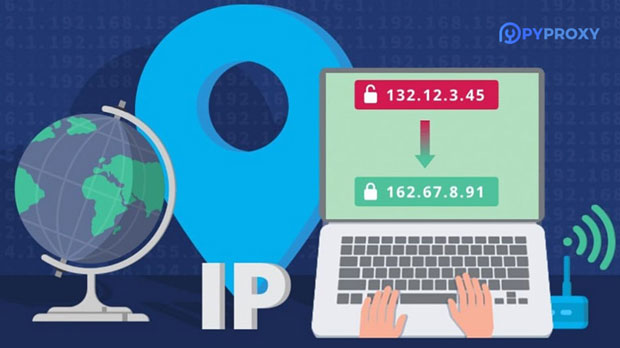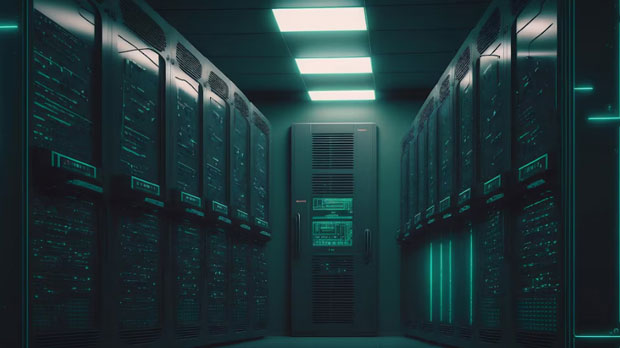The internet offers a world of possibilities, but certain websites, including The Pirate Bay, often face access restrictions based on location. For those seeking uninterrupted access to The Pirate Bay, the choice of residential proxies can make all the difference. Residential proxies are IP addresses assigned to real devices located in various countries, offering a more reliable and secure method of bypassing geographical restrictions. In this article, we will explore which country's residential proxies are most suitable for accessing The Pirate Bay, focusing on factors such as reliability, anonymity, and ease of use. Let’s dive into the analysis and provide valuable insights for users looking to enhance their browsing experience. Introduction to Residential ProxiesResidential proxies, unlike data center proxies, are connected to real devices, making them much harder to block or trace. They are often used to access content that is geo-restricted or to maintain privacy during web scraping activities. For users attempting to access The Pirate Bay, a residential proxy offers several advantages. Since residential proxies come from real devices, they have a lower chance of being flagged or blacklisted by websites. Additionally, these proxies offer a more stable and secure connection, ensuring a smoother browsing experience.Factors to Consider When Choosing a Residential Proxy for Accessing The Pirate BayBefore delving into which countries are ideal for residential proxies, it is important to understand the key factors that influence their effectiveness:1. Speed and Reliability: The Pirate Bay, like many torrent sites, requires a stable and fast connection to handle large file downloads or streaming content. Proxies from countries with a robust internet infrastructure are essential for providing fast and reliable access. 2. Anonymity and Privacy: Users accessing The Pirate Bay often seek anonymity. Residential proxies are ideal because they provide a layer of privacy by masking the user's actual IP address, ensuring that personal details are not exposed. 3. Legal Considerations: Different countries have different laws regarding online privacy and internet censorship. It's crucial to consider the legal landscape when selecting a proxy. Countries with lenient laws on data privacy may offer safer options for users looking to access restricted content. 4. Cost and Availability: Some countries offer residential proxies at more affordable rates, while others may have limited availability or be significantly more expensive. Balancing cost-effectiveness with quality is an important consideration for users.Which Countries Offer the best residential proxies for Accessing The Pirate Bay?Based on these factors, we can now look at the countries that provide the best residential proxies for accessing The Pirate Bay. Below are some of the top choices:1. United StatesThe United States is home to some of the most reliable residential proxies due to its advanced internet infrastructure and high-speed connections. Many proxy service providers offer U.S.-based residential IPs that are ideal for accessing The Pirate Bay. Additionally, the U.S. is known for its relatively lenient stance on online privacy compared to other countries. Users can enjoy a seamless browsing experience without worrying too much about surveillance or censorship.However, it is important to note that the U.S. has strict laws against copyright infringement, and accessing pirated content may result in legal consequences. Despite this, many users still prefer U.S. residential proxies due to their speed, availability, and reliability.2. CanadaCanada offers an attractive alternative to the United States for residential proxies. The country has strong internet infrastructure, with fast and reliable connections available at affordable rates. Furthermore, Canada has more relaxed internet laws compared to the U.S., making it a safer choice for users looking to access restricted content without fear of legal repercussions.Canadian residential proxies also tend to offer high levels of anonymity and privacy, making them ideal for users who value their security while accessing The Pirate Bay. The country’s proximity to the U.S. ensures that the proxies are just as fast, providing an efficient and cost-effective solution.3. The NetherlandsThe Netherlands is another top choice for residential proxies, especially for users in Europe. The country is known for its strong commitment to online privacy and freedom, making it an attractive destination for those looking to bypass restrictions. The Netherlands has well-developed internet infrastructure, ensuring that users can enjoy fast speeds and reliable connections when accessing sites like The Pirate Bay.Additionally, Dutch privacy laws are more lenient, and the country is less likely to block or restrict access to torrenting sites compared to other European nations. The Netherlands is also home to many hosting providers, making it a popular location for proxy providers to source residential IP addresses.4. SwitzerlandSwitzerland is renowned for its strict privacy laws and high-speed internet connections. The country is home to some of the best residential proxy providers, particularly for users seeking secure and private access to restricted websites like The Pirate Bay. Swiss proxies are highly anonymous and offer excellent protection against online tracking, making them ideal for users concerned with their privacy.While the cost of Swiss residential proxies may be higher than other countries, the additional privacy benefits and fast, reliable speeds make them worth the investment for many users.5. FranceFrance offers another strong option for residential proxies, particularly for users in Europe. The country has a well-developed internet infrastructure, and French residential proxies are often available at competitive prices. Although France has strict anti-piracy laws, residential proxies from the country can still provide a relatively safe way to access torrent sites.Moreover, France's internet laws focus more on copyright infringement than on blocking or restricting access to specific websites. As such, users can often use French residential proxies with a lower risk of encountering access issues.6. BrazilFor users in South America, Brazil is an appealing option for residential proxies. The country has a growing internet infrastructure, and many proxy providers offer Brazilian IP addresses that are affordable and reliable. Brazil is also one of the few countries where the legal environment around online privacy and copyright infringement is less stringent, providing a safer browsing experience for those accessing content on The Pirate Bay.However, users should be aware that internet speeds in Brazil may not be as fast as in countries with more developed infrastructures, so they may experience occasional lag or buffering during large file downloads.ConclusionWhen it comes to accessing The Pirate Bay, selecting the right residential proxy is crucial for ensuring speed, anonymity, and reliability. Countries like the United States, Canada, the Netherlands, Switzerland, France, and Brazil offer some of the best options for residential proxies due to their strong internet infrastructure, privacy laws, and affordability. While there are legal considerations to keep in mind, these countries offer a safe and effective means of bypassing geographical restrictions and maintaining anonymity while browsing.For users looking to access The Pirate Bay with minimal risk and maximum efficiency, selecting residential proxies from these countries will enhance their experience significantly. Whether you prioritize speed, cost-effectiveness, or privacy, there is a residential proxy option that suits your needs.
Jun 30, 2025


































































